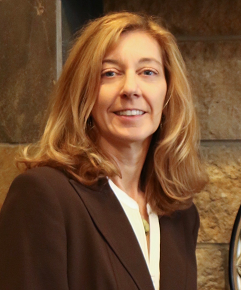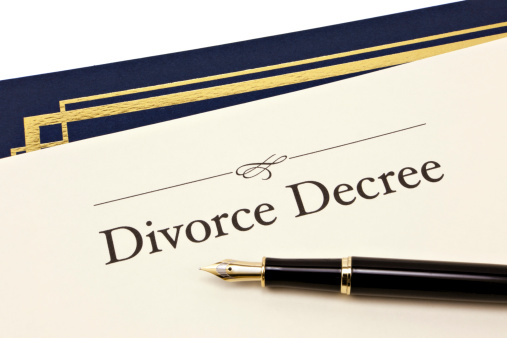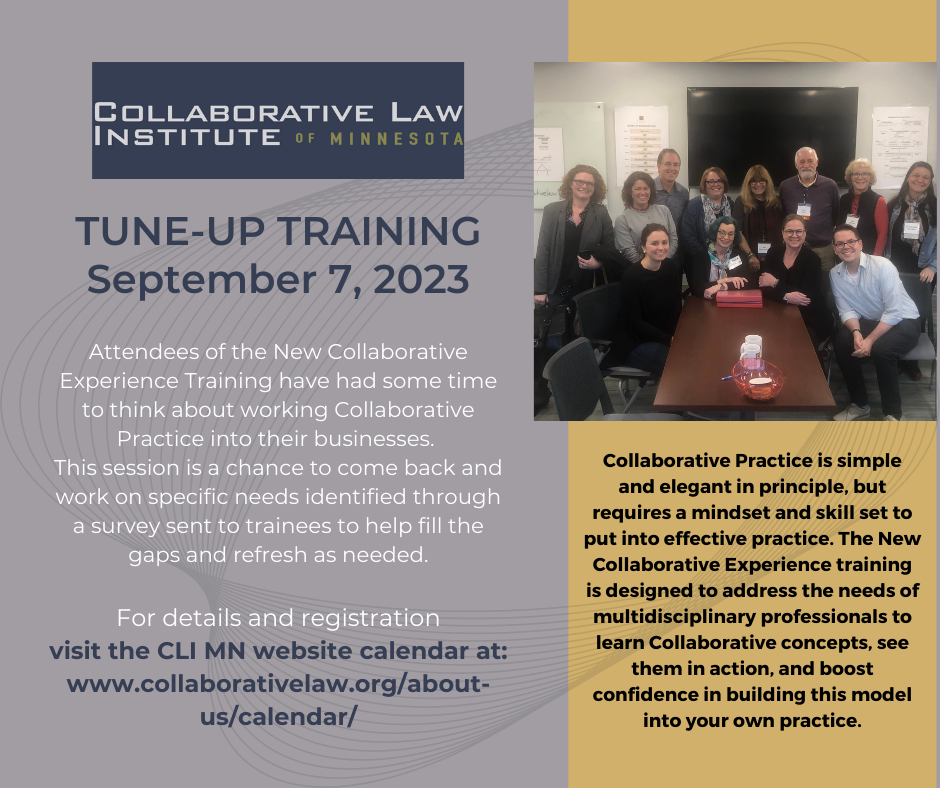The CLI MN East Metro Group invites you to join their Happy Hour on Thursday June 13 from 4 – 6:30 pm
Emily and Daniel were in love. Their love story had once been the envy of the neighborhood—a whirlwind romance that blossomed into a marriage filled with laughter, shared dreams, and whispered secrets. But as the years went by, cracks appeared in their fairy tale. After years of therapy, divorce was agreed upon as the next step.
At a local coffee shop, Emily consulted with Susan, an attorney who specialized in collaborative divorce, a path less traveled but one that promised healing rather than heartache.
“Emily,” Susan began, “I know this is tough. But have you considered a collaborative divorce?”
Emily sipped her latte, her eyes tracing the steam rising from the cup. “What’s that?”
Susan leaned in, her voice soft. “It’s a different approach. Instead of battling it out in court, we assemble a team—a dream team, if you will.”
Emily raised an eyebrow. “A dream team?”
“Yes,” Susan said. “Picture this: You, Daniel, and your respective attorneys. But that’s not all. We also bring in a neutral facilitator—a wise soul who guides conversations and ensures emotions don’t derail the process. And a financial expert—they’re like wizards with spreadsheets, helping us untangle the financial knots.”
Emily’s curiosity piqued. “And what’s the goal?”
“To find common ground,” Susan replied. “We sit around a table, not a courtroom. We talk, we listen, and we create solutions together. No winners or losers—just a fair resolution.”
Meanwhile, across town, Daniel met with his attorney, Ethan, who had an established divorce litigation practice. The fluorescent lights buzzed overhead, casting shadows on the carpet.
“Daniel,” Ethan said, adjusting his tie, “we’re going to court. It’s the way things are done. We serve her, file the papers and start the process of hearings.”
“But what about Emily?” Daniel asked. “We used to love each other. Can’t we find a better way?”
Ethan sighed. “This is how it works with divorce. We’ll request documents, hold depositions as needed, and present evidence. It’s a battle my friend.”
Daniel remembered the nights he’d held Emily as she cried. He wanted closure, not combat. Maybe Susan’s dream team was worth exploring.
Back at the coffee shop, Susan continued her pitch. “Emily, collaborative divorce is cost-effective. No endless court appearances, no billable hours stacking up. Plus, it’s faster.”
“But what if Daniel refuses?” Emily asked.
Susan smiled. “We’ll encourage him. And if he agrees, we’ll craft a customized settlement—one that considers your needs and the kids’ well-being.”
Back in Ethan’s office, Ethan faced Daniel. “We’ll fight for your rights, Daniel.”
Daniel glanced at Ethan’s stern face. He thought of Emily, their shared memories, and the pain they both carried. Maybe there was another way.
Emily and Daniel stood at the crossroads, their hearts heavy with choices.
The Collaborative Path:
- A team of allies.
- Solutions born from dialogue.
- Healing over hurting.
The Traditional Path:
- Adversaries in court.
- Evidence and arguments.
- Winners and losers.
As the sun dipped below the horizon, Emily and Daniel made their decision. They chose the dream team—the path of collaboration. And in that choice, they found not just a divorce, but a chance to rewrite their story.
When life hands you a divorce, consider the roads less traveled. Sometimes, the dream team can turn heartbreak into hope.
Disclaimer: The characters and events in this story are fictional. Any resemblance to real persons or situations is purely coincidental.
Note: This story is a creative representation of collaborative and traditional divorce. Seek legal advice from a professional attorney for personalized guidance.
This story was created in part with the use of artificial intelligence and in part by attorney Angela Heart.
 Angela Heart | Attorney
Angela Heart | Attorney
Angela is a collaborative family law attorney at Heart Law, LLC. Her mission is to enable and empower divorcing couples to have a smooth transition that is family focused during a life changing event. To find more information about Heart Law go to www.heartlaw.net.
Heart Law, LLC
651-337-1333 | angela@heartlaw.net
www.heartlaw.net
Click here for details and to Register
Dates: (Three full-days total)
*Thursday, May 16, 2024
*Happy Hour end of day Thursday scheduled for attendees at location TBD
Friday May 17, 2024
Thursday, May 23, 2024
Time: 8:30-4:30 (Detailed timing and agenda TBD)
Location: 3300 Edinborough Way, Edina, MN 55435, 1st Floor Training Room
Attendance Fees:
Not a member of CLI MN:
Non-CLI MN members: $595
Student – Not a member of CLI: $150
(Not a member? The NCE registration form will ask you if you would like to join CLI MN, prior to registering for the NCE training. Join CLI MN and attend at the Student member rate!)
Members of CLI MN:
CLI MN members who have NOT taken this training before: $300
CLI MN members who have taken this training but would like a refresher: $150 (Please email cli@collaborativelaw.org for your registration code for this pricing.)
CLI MN Student members: $0.00
CLI MN Emeritus and Annual Partners: $0.00
*Nonmembers will have the opportunity to join CLI prior to registering for the NCE Training.
**Discount Code: If you have a discount code to attend the training, you will enter it prior to checking out.
Continuing Education Credits: Pending approval of 18 Standard credits for: CLE, Board of Psychology, and LMFT. A certificate of attendance for self-filling of other credentials will also be provided.
Cancellation: Refunds for registration will be processed if notice of cancellation is received by Friday May 1, 2024
Description:
Day I: Training on collaborative practice principles and fundamentals, the roles of the professionals on the interdisciplinary team, the paradigm shift, protocols of practice, the road map to resolution, and ethics.
Day II: A demonstration of the collaborative model, one involving a neutral coach/facilitator through performances of 13 vignettes depicting a full-team collaborative case from start to almost finish. The vignettes will give detailed insight into the roles of the neutral coach/facilitator, both attorneys, the neutral child specialist, and the neutral financial professional. The different clients in the vignettes present the team with challenging legal, relational, financial, and parenting issues. The performance will be instructive, practical, and hopefully, inspirational. Day 2 is informative for the experienced collaborative practitioner as well as the new collaborative practitioner.
Day III: Focuses on completing a case, advocacy, and ethics in the Collaborative process, what happens when you hit bumps in the road, talking to clients about this process, connecting with your profession and resources to build your practice.
Educational Level: Advanced
Tune-Up Training: Date in September TBD, 9:00 AM – Noon will be based on a survey of attendees to learn where they feel additional instruction would be most helpful. (This follow-up session may or may not be additional CE credits.)
Training Committee Chairs:
Louise Livesay-Al | louise@livesaylawoffice.com
Rebecca Randen | rebecca@rcglawoffice.com
For questions on registration contact: Sandy Beeson: cli@collaborativlaw.org
Topic: CLI New Collaborative Experience Tune-up Training
Description: Attendees of the New Collaborative Experience have had some time to think about working Collaborative practice into their businesses. This session is a chance to come back and work on specific needs identified through a survey sent to trainees to help fill the gaps and refresh as needed.
In response to the survey from participants who attended the NCE we will be discussing:
- Enrolling the Client
- How to talk about Neutrals
- How to get the spouse on board with CP
- Paperwork needed for CP
- Marketing
Date: September 7, 2023
Time: 9:00 AM – 12 Noon
Location: 3300 Edinborough Way, Edina, MN 55435 | First floor training room
Fee: $0
Food: Light snacks and refreshments
CE: None
Materials: Provided at the training
Speakers: Training Committee members based on results of survey
Training Committee Chairs:
Louise Livesay-Al | louise@livesaylawoffice.com
Rebecca Randen | rebecca@rcglawoffice.com
For questions on registration contact: Sandy Beeson: cli@collaborativlaw.org
 The professionals on a team are, generally speaking, the two attorneys, a neutral financial professional, a neutral child specialist, and a neutral divorce coach. Although the inclusion of financial and mental health professionals in the divorce process is nothing new, the manner in which they are used in the Collaborative process is unique. The attorneys’ roles are different in Collaboration, as well. While each spouse retains his or her own attorney, the attorneys work together to help the clients achieve an outcome that works for the entire family. The attorneys give legal advice to their individual clients, but more importantly, they help their clients realize what their interests and goals are. The objective of Collaboration is to get to a place where everyone is OK (a win-win) rather than a win-lose. The attorneys are trained in the Collaborative model and interest-based negotiation.
A financial neutral helps the divorcing couple with property division and cash flow. Financial neutrals are financial experts and are CPAs, CDFAs, and CFSs who are trained in the Collaborative process and who understand the legal process.
A child specialist is a neutral who helps the couple with creating a comprehensive and viable parenting plan. The child specialist is a therapist who is also trained in the Collaborative process. The child specialist is the voice of the children and not only helps the children during the divorce process, but helps parents help their children during this transition.
A divorce coach is also a therapist and a neutral in this process. The coach’s role is to the help the couple communicate better. It is important for each spouse to have a voice in this process and the coach can help with that. In high conflict cases, a coach helps the process move along more smoothly.
Although it seems like there are a lot of professionals involved in Collaboration, every professional has a specific role. In a non-collaborative case, the attorneys are acting as financial advisor, child specialist, and coach. And while attorneys can help with those pieces of the case, attorneys are not experts in those areas. In the Collaborative process, you get the best advice from the various professionals who are trained to help you reach a settlement. Consequently, a Collaborative team CAN help you avoid the divortex!
The professionals on a team are, generally speaking, the two attorneys, a neutral financial professional, a neutral child specialist, and a neutral divorce coach. Although the inclusion of financial and mental health professionals in the divorce process is nothing new, the manner in which they are used in the Collaborative process is unique. The attorneys’ roles are different in Collaboration, as well. While each spouse retains his or her own attorney, the attorneys work together to help the clients achieve an outcome that works for the entire family. The attorneys give legal advice to their individual clients, but more importantly, they help their clients realize what their interests and goals are. The objective of Collaboration is to get to a place where everyone is OK (a win-win) rather than a win-lose. The attorneys are trained in the Collaborative model and interest-based negotiation.
A financial neutral helps the divorcing couple with property division and cash flow. Financial neutrals are financial experts and are CPAs, CDFAs, and CFSs who are trained in the Collaborative process and who understand the legal process.
A child specialist is a neutral who helps the couple with creating a comprehensive and viable parenting plan. The child specialist is a therapist who is also trained in the Collaborative process. The child specialist is the voice of the children and not only helps the children during the divorce process, but helps parents help their children during this transition.
A divorce coach is also a therapist and a neutral in this process. The coach’s role is to the help the couple communicate better. It is important for each spouse to have a voice in this process and the coach can help with that. In high conflict cases, a coach helps the process move along more smoothly.
Although it seems like there are a lot of professionals involved in Collaboration, every professional has a specific role. In a non-collaborative case, the attorneys are acting as financial advisor, child specialist, and coach. And while attorneys can help with those pieces of the case, attorneys are not experts in those areas. In the Collaborative process, you get the best advice from the various professionals who are trained to help you reach a settlement. Consequently, a Collaborative team CAN help you avoid the divortex!
 In the Twin Cities, many family law attorneys offer a free consultation to learn about your options. This is a time to meet your potential new attorney and ask your questions. The consultation can serve three main purposes.
First, you can learn about your divorce options. There are four general processes for divorce:
In the Twin Cities, many family law attorneys offer a free consultation to learn about your options. This is a time to meet your potential new attorney and ask your questions. The consultation can serve three main purposes.
First, you can learn about your divorce options. There are four general processes for divorce:
- pro se/unrepresented where you go through the process without legal guidance;
- mediation where a neutral third party helps you come up with the agreements;
- collaborative divorce where both parties commit to a respectful out of court process with lawyers and other professionals guiding the process; and
- litigation, the court-based traditional process. A good consultation should educate you on all of these options.
 If you are facing the possibility of a divorce, choosing a divorce lawyer could be one of the most important decisions in your life. Divorce is unfair. It forces you to make some of the most difficult decisions in your life at a time when you might be least able to do so. Having someone you trust to advise you is important.
There are hundreds of lawyers in the Twin Cities with significant experience handling divorce cases. Regardless of what you may think of lawyers (and surveys would suggest that may not be overly positive) lawyers are, for the most part, like the rest of our society. They come in all shapes and sizes, and have varying degrees of skill, honesty and effectiveness. If you work hard and do your homework, you can find one of the really good ones. Perhaps more importantly, you want to the best attorney for you. The key is to know how to investigate and interview so that you find the right fit.
Investigating Lawyers to Interview.
The first step is to find attorneys to interview. The best way to start is to talk with people you know who have had a positive experience with their divorce attorney and find out what it is about their attorney that they liked. The other option is to research the internet carefully, at least to make sure you understand all of the process options available. While it would be reckless to choose an attorney from online information alone, the internet can be an effective way to find someone to interview. It is also a good way to learn about the main process choices that exist in our community; namely traditional representation; mediation and Collaborative Practice.
Once you have found an attorney to interview (or ideally several attorneys), you should contact each attorney (by phone or email) and find out if they charge for the initial consultation. Many family law attorneys will provide consultations for free, or at little charge, in order to give you the opportunity to meet them and learn how they work.
When you do interview the attorneys, do not be afraid to ask them difficult questions to help you determine if they are a good fit for you. Many books include guidance on questions to ask your attorney including, The Collaborative Way to Divorce.
Make sure that each attorney that you interview provides a description of the main process choices described above and make sure they describe their experience and training in each of these areas. Attorneys, like most people, have preferences and biases and their description of the three basic options can be filtered by their own preferences, rather than being based upon actual experience. If, for example, your attorney has not had significant experience in mediation or Collaborative Law, their recommendation may be based on third hand accounts of information or bias, rather than actual expertise. To find attorneys who have experience or expertise in Collaborative Law and mediation, go to www.collaborativelaw.org or www.divorcechoice.com.
If you are facing the possibility of a divorce, choosing a divorce lawyer could be one of the most important decisions in your life. Divorce is unfair. It forces you to make some of the most difficult decisions in your life at a time when you might be least able to do so. Having someone you trust to advise you is important.
There are hundreds of lawyers in the Twin Cities with significant experience handling divorce cases. Regardless of what you may think of lawyers (and surveys would suggest that may not be overly positive) lawyers are, for the most part, like the rest of our society. They come in all shapes and sizes, and have varying degrees of skill, honesty and effectiveness. If you work hard and do your homework, you can find one of the really good ones. Perhaps more importantly, you want to the best attorney for you. The key is to know how to investigate and interview so that you find the right fit.
Investigating Lawyers to Interview.
The first step is to find attorneys to interview. The best way to start is to talk with people you know who have had a positive experience with their divorce attorney and find out what it is about their attorney that they liked. The other option is to research the internet carefully, at least to make sure you understand all of the process options available. While it would be reckless to choose an attorney from online information alone, the internet can be an effective way to find someone to interview. It is also a good way to learn about the main process choices that exist in our community; namely traditional representation; mediation and Collaborative Practice.
Once you have found an attorney to interview (or ideally several attorneys), you should contact each attorney (by phone or email) and find out if they charge for the initial consultation. Many family law attorneys will provide consultations for free, or at little charge, in order to give you the opportunity to meet them and learn how they work.
When you do interview the attorneys, do not be afraid to ask them difficult questions to help you determine if they are a good fit for you. Many books include guidance on questions to ask your attorney including, The Collaborative Way to Divorce.
Make sure that each attorney that you interview provides a description of the main process choices described above and make sure they describe their experience and training in each of these areas. Attorneys, like most people, have preferences and biases and their description of the three basic options can be filtered by their own preferences, rather than being based upon actual experience. If, for example, your attorney has not had significant experience in mediation or Collaborative Law, their recommendation may be based on third hand accounts of information or bias, rather than actual expertise. To find attorneys who have experience or expertise in Collaborative Law and mediation, go to www.collaborativelaw.org or www.divorcechoice.com.
 I am often asked what a “drafting” process for divorce entails. While a full process often has 3-5 professionals, a process for clients who have worked out most of the resolutions on their own, can be much more streamlined. Using an attorney for legal advice and drafting can be a cost-effective and quick way to proceed. Here is how the process typically works:
1. Client hires attorney. In a drafting process, the client should hire an attorney who is willing to take on a drafting role – drafting the agreement and advising the client of his/her legal rights.
2. Client and attorney meet to discuss the resolutions reached. In a drafting process, the clients have typically already reached agreement on property division and cash flow. They have disclosed everything to each other and made decisions about how to divide the property (assets and liabilities) and agreed upon child support and/or spousal maintenance if needed. In this initial meeting, the client provides the attorney all supporting documentation and discusses the agreements reached. The attorney advises the client of the legal implications of the agreements and either confirms the agreements or discusses potential revisions. Sometimes, the attorney brings up ideas or questions that the client has not yet contemplated. If so, the client can go back to their spouse and discuss these additional matters.
3. Once the final agreements are discussed, attorney can draft the documents. In Minnesota, the substantive divorce document is a Stipulated Judgment and Decree. There are other supporting documents needed, but this is the main document needed. This Judgment and Decree outlines all resolutions that have been agreed upon.
4. Client reviews the documentation.
5. Spouse reviews the documentation and has an attorney review and advise him/her of the legal implications.
6. The attorneys and clients can communicate and revise the documentation as needed.
7. Once finalized, the documents are signed by clients and attorneys and filed.
While a drafting process can be efficient and cost-effective, it works best when clients have all agreements in place and do not waiver from their original positions. If the clients learn more about their legal rights and wants to further explore options, it is often best to enter into a collaborative process, where more options can be explored.
I am often asked what a “drafting” process for divorce entails. While a full process often has 3-5 professionals, a process for clients who have worked out most of the resolutions on their own, can be much more streamlined. Using an attorney for legal advice and drafting can be a cost-effective and quick way to proceed. Here is how the process typically works:
1. Client hires attorney. In a drafting process, the client should hire an attorney who is willing to take on a drafting role – drafting the agreement and advising the client of his/her legal rights.
2. Client and attorney meet to discuss the resolutions reached. In a drafting process, the clients have typically already reached agreement on property division and cash flow. They have disclosed everything to each other and made decisions about how to divide the property (assets and liabilities) and agreed upon child support and/or spousal maintenance if needed. In this initial meeting, the client provides the attorney all supporting documentation and discusses the agreements reached. The attorney advises the client of the legal implications of the agreements and either confirms the agreements or discusses potential revisions. Sometimes, the attorney brings up ideas or questions that the client has not yet contemplated. If so, the client can go back to their spouse and discuss these additional matters.
3. Once the final agreements are discussed, attorney can draft the documents. In Minnesota, the substantive divorce document is a Stipulated Judgment and Decree. There are other supporting documents needed, but this is the main document needed. This Judgment and Decree outlines all resolutions that have been agreed upon.
4. Client reviews the documentation.
5. Spouse reviews the documentation and has an attorney review and advise him/her of the legal implications.
6. The attorneys and clients can communicate and revise the documentation as needed.
7. Once finalized, the documents are signed by clients and attorneys and filed.
While a drafting process can be efficient and cost-effective, it works best when clients have all agreements in place and do not waiver from their original positions. If the clients learn more about their legal rights and wants to further explore options, it is often best to enter into a collaborative process, where more options can be explored.
 A friend of mine who knows I am intricately woven into the divorce-planning and alternative dispute resolution circles in the Minneapolis St. Paul metro recently asked me if I knew a certain divorce attorney. He knew of a person who was not feeling too well about their choice of a divorce attorney. I told my friend that I did not recognize the name.
Being a little curious, I searched the web for this individual. What I found was that family law was one of about eight other areas of law this person practiced. I wondered just how much family law this attorney does in relationship to all the other practice areas listed. Little does my friend know, his question inspired my writing this blog post.
Would you go to a painter if you needed a new roof? Would you go to a heart surgeon for a fractured arm? Hardly, you say. Why is it then when people have decided to end their marriage they first choose to see someone who is not a subject matter expert in the areas causing conflict between them and their spouse? They want this person to fix all their problems when that person probably does not have all the skill sets to solve all of the issues that present themselves in a divorce. I would submit that there is no one person who has all the skill sets necessary to effectively deal with all the intricacies of a divorce.
Perhaps the conflict is about co-parenting the couple’s children. Would it make sense to seek out a neutral child specialist to help the parents sort out the rough spots and more importantly benefit their children for years and really for their lifetime? Maybe the conflict is over financial matters. You would think a neutral financial specialist would be able to offer the most value to the couple in those situations. A couple not able to communicate effectively may benefit the most by seeing a neutral divorce relationship coach who can help both spouses manage their emotions which in turn frees up the flexible thinking they will need as they work through getting unmarried. If legal questions arise, you would think an attorney who primarily works in family law matters would be the best resource.
What I have described above is the client centered team model approach to a collaborative divorce. A team of professional experts in their own subject matter areas working for you and your family’s behalf. If you would like to learn more about this respectful and dignified way to divorce without court click on www.collaborativelaw.org to check it out.
A friend of mine who knows I am intricately woven into the divorce-planning and alternative dispute resolution circles in the Minneapolis St. Paul metro recently asked me if I knew a certain divorce attorney. He knew of a person who was not feeling too well about their choice of a divorce attorney. I told my friend that I did not recognize the name.
Being a little curious, I searched the web for this individual. What I found was that family law was one of about eight other areas of law this person practiced. I wondered just how much family law this attorney does in relationship to all the other practice areas listed. Little does my friend know, his question inspired my writing this blog post.
Would you go to a painter if you needed a new roof? Would you go to a heart surgeon for a fractured arm? Hardly, you say. Why is it then when people have decided to end their marriage they first choose to see someone who is not a subject matter expert in the areas causing conflict between them and their spouse? They want this person to fix all their problems when that person probably does not have all the skill sets to solve all of the issues that present themselves in a divorce. I would submit that there is no one person who has all the skill sets necessary to effectively deal with all the intricacies of a divorce.
Perhaps the conflict is about co-parenting the couple’s children. Would it make sense to seek out a neutral child specialist to help the parents sort out the rough spots and more importantly benefit their children for years and really for their lifetime? Maybe the conflict is over financial matters. You would think a neutral financial specialist would be able to offer the most value to the couple in those situations. A couple not able to communicate effectively may benefit the most by seeing a neutral divorce relationship coach who can help both spouses manage their emotions which in turn frees up the flexible thinking they will need as they work through getting unmarried. If legal questions arise, you would think an attorney who primarily works in family law matters would be the best resource.
What I have described above is the client centered team model approach to a collaborative divorce. A team of professional experts in their own subject matter areas working for you and your family’s behalf. If you would like to learn more about this respectful and dignified way to divorce without court click on www.collaborativelaw.org to check it out.
 Former litigators who now practice exclusively collaborative law have varied reasons for that decision. Many revolve around better outcomes for clients or more peaceful processes. A reason that is less commonly talked about is the well being of the practitioner.
A litigated divorce is often ripe with conflict and animosity. There is built in adversity and the very structure often leads to more anger and frustration. And, this is between the clients who are only going through this once. A divorce lawyer or other divorce professional deals with hundreds of these cases. They are often in the middle of many divorces and the animosity and anger can take a toll.
A collaborative divorce, on the other hand, can be a more positive and less stressful experience. It is an out-of-court, non-adversarial process. The pacing of a collaborative divorce is controlled by the parties so no one is at the whim of a court’s schedule. Clients in collaborative divorce maintain control of the outcomes. Discovery (exchange of information) is done in an informal manner with full disclosure of whatever either party requests. Because of these reasons and more, some collaborative professionals find a higher level of satisfaction and well-being in their work.
Now, some may wonder why a potential client should care about their lawyer’s well-being? The professionals on a collaborative team are the guides and support for clients. A client going through divorce wants an attorney who is in the best position to guide them through that process. Collaborative divorce is a more respectful and peaceful option for clients. It is the same for the professionals.
Doctor martin Luther King, Jr. once said, “The happier we are, the better we work.” I stopped litigating cases for many reasons. My personal well-being may be the most important one.
Former litigators who now practice exclusively collaborative law have varied reasons for that decision. Many revolve around better outcomes for clients or more peaceful processes. A reason that is less commonly talked about is the well being of the practitioner.
A litigated divorce is often ripe with conflict and animosity. There is built in adversity and the very structure often leads to more anger and frustration. And, this is between the clients who are only going through this once. A divorce lawyer or other divorce professional deals with hundreds of these cases. They are often in the middle of many divorces and the animosity and anger can take a toll.
A collaborative divorce, on the other hand, can be a more positive and less stressful experience. It is an out-of-court, non-adversarial process. The pacing of a collaborative divorce is controlled by the parties so no one is at the whim of a court’s schedule. Clients in collaborative divorce maintain control of the outcomes. Discovery (exchange of information) is done in an informal manner with full disclosure of whatever either party requests. Because of these reasons and more, some collaborative professionals find a higher level of satisfaction and well-being in their work.
Now, some may wonder why a potential client should care about their lawyer’s well-being? The professionals on a collaborative team are the guides and support for clients. A client going through divorce wants an attorney who is in the best position to guide them through that process. Collaborative divorce is a more respectful and peaceful option for clients. It is the same for the professionals.
Doctor martin Luther King, Jr. once said, “The happier we are, the better we work.” I stopped litigating cases for many reasons. My personal well-being may be the most important one.




